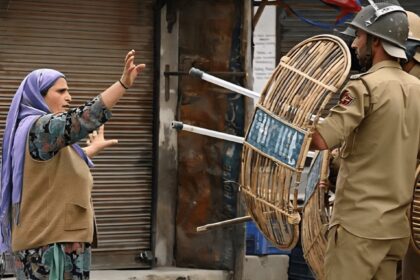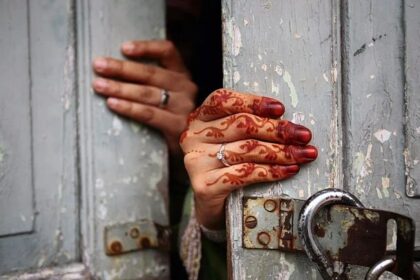On a typical day, you are bound to encounter a beggar on the street, on the road, or even on the pavements of your city. Some are selling flowers or handmade Gajray, some are wiping the windscreens of cars, and some are just begging. These are the nomads, or commonly known as the Khanabadosh people. The word has been derived from the Persian language, meaning “people who carry their homes with them.”
In appearance, they may seem like an illiterate begging clan, but they should not be underestimated, as many of them are highly skilled in weaving, making pots, and crafting their own jewelry from glass. Found mainly in the big cities of Pakistan, like Lahore, Sukkur, Karachi, and Rawalpindi, these people are highly capable of living their lives without the shelter of the government and the basic necessities of land and a house. The Khanabadosh people live their whole lives in small spaces, worn-out tents, under bridges and flyovers, and on empty plots, yet surprisingly, they live full lives.
The Talented Lives
Their main source of income is begging, although some also sell trinkets and perform tamashay with monkeys and snakes. These people are rich in culture, as they have absorbed many cultures, having no fixed place of residence. They are experts in dance and music and also perform on various instruments. The Nomads of Sindh are a particular example, as they are experts in weaving carpets and clothes for shelter and themselves. The Nomads of Balochistan gather rags from different places and make beautiful patterns by cutting the cloth in different shapes.
The men and women of these clans equally play a role in maintaining their lives. The men go out and sell items, while begging is considered more of a collective endeavor. The women take care of the cattle, and as far as food production is concerned, a documentary showed that men are responsible for making dinner, while the women make the Roti. This reflects early human living, where men would be hunters and gatherers while women would take care of the livestock.

Epitome of Man vs. Nature
Spending their whole lives on the streets and near the bustling roads, these people are molded to be very strong in the face of nature. From eating the dust of the busy roads, not having any proper sanitation system, eating whatever is provided, and living through storms, rain, and hot sun, the Khanabadosh clan is the epitome of humans living in nature. I dare say, they are thriving and continuing the race. The children, although not educated, know how to talk to people and get them to give them money, which itself is a feat. The elder women carry their babies in their arms and are either begging or selling flowers, never resting for a second.
The Government and Nomads

But even so, let’s not forget that these people do need citizenship in order to live in the country. The government has made it even more difficult for them to get their national identity cards from NADRA in recent years. This makes the situation even more difficult, as there are no facilities or programs designed for them by the government. And even if they wanted to get their citizenship, new regulations have made it harder. Instead of making things more difficult for them, the government should make policies to aid them. These people should be given opportunities for jobs and land to live on. But of course, all that can be done when the majority of the population of Pakistan is provided with the basic necessities of life, and people do not have to worry or work for them. As the law itself states, the government is bound to provide its citizens with food, shelter, and water, among other things. Therefore, it is only fitting to think that at least the legal citizens are provided with these facilities before the nomads.
As previously mentioned, the Khanabadosh are expert artisans and are very capable of creating various items. The government should also work toward creating opportunities for them to display their talent and earn a living from it, rather than being forced to resort to begging.
Home Is Where the Heart Is

The Khanabadosh, like the gypsies of every country, are an essential part of our country. They not only reflect a combination of many cultures and are an example of cultural fusion, but these people also show us the value of the blessings of food, shelter, and, above all, a place we call home. And if we look at a deeper level, they teach us that we do not necessarily need a house to call a place home; rather, it is the people inside that make it a home. With those people, anywhere on earth—even if it is under a bridge in a bustling city filled with dust—we can find the warmth of a four-walled house and the comfort of the people within it.
















